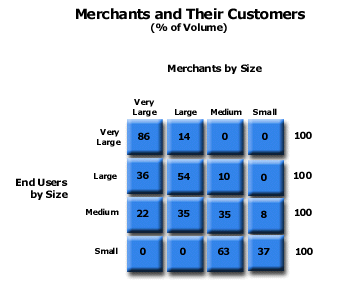FINDING THE OPEN DOOR
by Donald V. Potter
A company may want to build volume and achieve the desirable primary supplier role with as many customers as possible, but it cannot gain volume unless customers are willing to make a change. Volatility is the movement of volume from one supplier to another.
When Failure Equals Opportunity
“Failure opens a door, giving competitors a chance to break into existing relationships.”
In a non-hostile market, roughly 8-15% of volume changes suppliers each year. Volume commonly changes hands when one supplier raises the bar by offering better features, superior pricing, or some other benefit that wins the customer’s sales volume. As long as the market is robust and growing, other suppliers might not feel compelled to match the new performance standard.
Market hostility actually reduces volatility. The hostile markets see only 2-7% of volume shifting in any given year. Once a market turns hostile, far less volume can be won away because competitors quickly learn to copy the benefits that move share and to be responsive when market prices decline. In hostility, it becomes very difficult for one supplier to get an edge on its peers on either visible benefits of pricing.
Instead, nearly all share movement in a hostile market takes place because the incumbent supplier failed his customer in some way. Failure often occurs because the incumbent supplier was unable or unwilling to meet the average performance of other competitors or to maintain historic levels of performance.
One supplier’s failure, though, is another supplier’s opportunity. For a supplier seeking to enter a customer relationship or to move up toward the primary supplier role, the failure of an incumbent is the best chance and probably the only chance for gain.
Opportunity Around the Edges
The volatility caused by failure, when it occurs, is not spread evenly across the market. It is more apt to occur with a supplier’s smaller customers. Large customers tend to be supplied by large suppliers.
With a Supplier’s Smaller Customers: Large customers tend to be supplied by large suppliers. One company recently did an analysis of its channel customers and their end-user customers. This exhibit shows their findings.

Overwhelmingly, the very large end-users purchase from very large members of the channel. And, the big suppliers also take very good care of their big customers, offering them high levels of service. So the largest customers are far less volatile than the average customer. For example, if 4 percent of an overall market is volatile, less than 2 percent of the very large customers’ volume is likely to be volatile.
Supplier failure is more likely to occur with medium or small customers. These customers tend to feel squeezed in their own markets by competition from larger customers on the basis of price and from smaller customers on the basis of service. Seeking to compete on both price and service, these caught-in-the-middle customers can be inconsistent in their needs and in the demands they place on their own suppliers. They tend to be far less trusting of their suppliers and more likely to believe that suppliers have failed them.
There can also be supplier failure with large customers. While the very large customers are assured of being supplied by the largest and strongest competitors in the marketplace, somewhat smaller customers may be served by weaker suppliers in the market — those whose programs tend to suffer under the pressure of very tough pricing.
In The Less Important Supplier Roles
Primary positions are less volatile than the market as a whole. Because primary relationships are difficult to develop and expensive to lose, suppliers protect them fiercely, and failure is less frequent here than it is in the lesser roles.
Conversely, volatility is high in the tertiary position. This is especially the case for tertiary suppliers who achieved their position by offering low prices as an enticement. Customers buying for these reasons tend to be disloyal and will change suppliers with great regularity.
For example, one of our recent clients found in its market that the tertiary positions sold on price discounts were over five times as volatile as the market. These positions were hard to hold and nearly impossible to improve.
Closing Thought
Volatility that opens the door for share gain may not occur when and where a supplier would prefer. Suppliers who want to attain primary supplier roles may have to progress opportunistically.
(Note: This Perspective was written in the context of the economy in 1995. While some of the companies may have changed their policies or indeed no longer exist, the patterns they exhibit still hold today.)
| Recommended Reading |
| For a greater overall perspective on this subject, we recommend the following related items:
Analyses:
Symptoms and Implications: Symptoms developing in the market that would suggest the need for this analysis.
*** |
